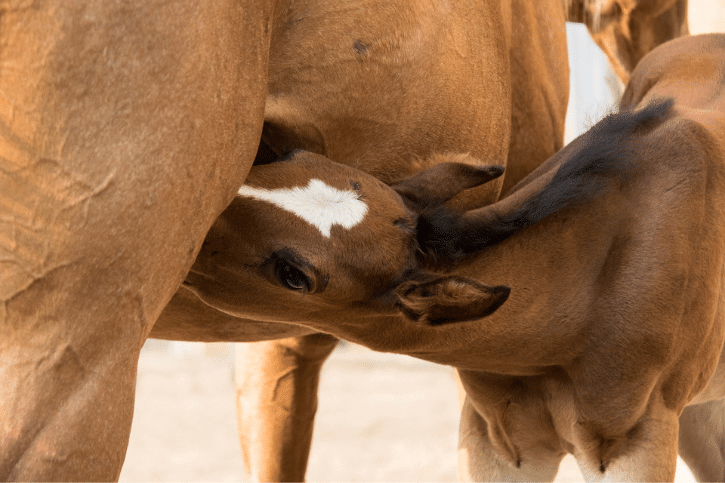How Many Teats Does A Horse Have?
One of our mares recently had a foal, and we’ve been loving watching it grow up and watching the mother dote on the new member of the family.
We’ve never bred before, so the whole process has been really exciting, not to mention that it all went so smoothly!
One point of contention, though, was a debate my wife and I were having about having about how many teats the horse had.
We couldn’t agree, and neither of us felt like going in for a closer inspection, so I decided to look into it.
So, how many teats does a horse have?
A horse has two, small teats, which is actually quite unique for animals like them. Mares have each paid of glands on the side of the midline joining together and exiting via a single teat on each side, meaning a horse only has two teats, unlike cows or goats which have four.
This put our debate to rest, then, since I knew they didn’t have as many teats as other farm animals do.
There are a few reasons why this is the case, and why horses are different to other animals, so let’s look in more detail.
Why do horses have two teats?
There isn’t a simple answer to this, but the main reason is probably just to do with horse pregnancies and birthing habits.
Many animals have multiple offspring at birth, on pretty much all occasions, such as dogs and cats.
These animals tend to have many teats, in order to be able to sufficiently suckle all of their offspring.
Horses, on the other hand, almost always give birth to one offspring.
Thus, one or two teats is all they really need; a second one simply as a backup, if one teat has been sucked dry.
Large animals like horses and cows would struggle to bear the weight of multiple babies in their womb all at once, so it very rarely happens.
You might wonder why cows should have four teats if they too most commonly only have one baby.
This is a matter of evolutionary debate, but some suspect that evolution pushed the cow towards four individual milk bags to avoid injury.
The two ligaments that support the udder are arranged into a kind of cross, so four milk bags splits them between this quite well.
Horses just have much smaller milk bags and teats, and so they don’t run the risk of this kind of injury.
So, can horses ever have more than one baby?
Can a horse have twins?
The simple answer is yes, it’s possible, but the fact is that it almost never happens.
In the first place, twin fetuses to begin with are very uncommon.
Horses have not evolved to conceive multiple children in this way.
When they conceive, they conceive only one child because that is what their body is capable of bearing.
Horses conceiving twins is not unheard of, though. It can happen.
The problem then, though, is whether or not the horse can carry the twins to term.
It’s very difficult for them to do so, since their bodies just aren’t really adapted to carry multiple babies.
In most cases, the horse will miscarry at some point in the pregnancy.
If the horse does carry the twins to term, she then stands a very large risk of injuring herself or the babies during the birth.
There are documented cases of this happening, but typically the mother or one or both of the children die in the birthing process.
For this reason, twins are often aborted in horses before they’re able to develop.
One, single foal has the best chance of being carried to term and being born healthy.
So, what else can we do with horse milk?
Can humans drink horse milk?
The simple answer is yes, humans can drink horse milk.
In some parts of the world, like parts of Russia and Asia, people have been drinking horse milk for millennia where cow’s milk is not available.
It is even turned into a drink called kumis, which is just fermented mare’s milk.
Many artisan food stores sell horse milk today, though it has never become all that popular.
Milking horses is very hard due to the size of their teats, and the fact that cows and goats have been adapted and selectively bred by humans over the years to produce more milk and be more easily milkable.
If you want to try horse milk, though, it’s certainly an option!
Do horses give milk to their babies?
Yes, like any mammal, baby horses feed off their mother’s milk in the earliest stages of their lives.
This is why horses only have two small teats.
Their only purpose is to feed children, and they typically only have one offspring at a time.
Furthermore, foals are quite tall, and they have no problem reaching the high up teats.
This might be more of a problem for goats or cows, which is another part of the reason their teats hang lower.
Horses really are unique in so many ways, when you compare them with animals that we might traditionally think of as being somehow similar, like cows and goats.
They have only two teats, in large part for the reason that horses very, very rarely conceive twins, and even more rarely do they take them to term.
Cows or goats might have multiple offspring at once, though this is still uncommon, so having four teats helps them feed all their babies.
